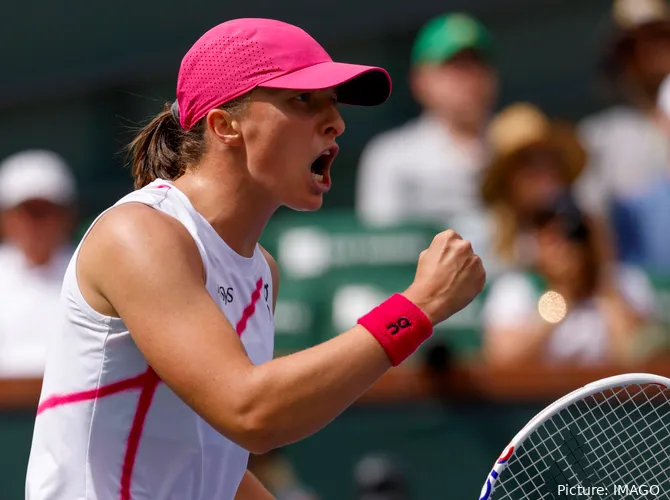
The Porsche Tennis Grand Prix in Stuttgart, Germany, is serving up a quarterfinal showdown that has tennis fans on the edge of their seats. On Saturday, April 19, 2025, World No. 2 Iga Swiatek will lock horns with Latvia’s Jelena Ostapenko in a match that promises fireworks. The WTA 500 event, the traditional kickoff to the clay-court season, has already delivered thrilling moments, but this clash stands out as the marquee matchup. For Swiatek, a two-time Stuttgart champion, it’s a chance to conquer a personal demon—Ostapenko, who holds an astonishing 5-0 head-to-head record against her. “It hasn’t been easy in the last few months,” Swiatek admitted recently, reflecting on the pressure of high expectations. “After having such good seasons, I’m in the spotlight, and I’m being judged for everything.”
Swiatek’s journey to the quarterfinals was a masterclass in precision. After a first-round bye, the 23-year-old Pole dismantled Croatian qualifier Jana Fett 6-2, 6-2 in just 76 minutes, improving her Stuttgart record to an impressive 11-1. “I’m happy that I hinting at a little bit of rhythm,” she said post-match. “It felt great.” Swiatek, a four-time Roland Garros champion, is no stranger to clay, boasting an 89-11 career record on the surface. Her topspin-heavy forehand and elastic movement make her a natural on the red dirt, but Ostapenko’s fearless, high-risk style has consistently disrupted her rhythm. “For sure, I think she plays well against me,” Swiatek said after their 2023 US Open encounter, where Ostapenko triumphed 3-6, 6-3, 6-1. “I don’t really know what happened with my game. I felt no control suddenly.”
Ostapenko, the 2017 French Open champion, has been a thorn in Swiatek’s side since their first meeting in 2019, when she routed the Pole 6-0, 6-2 in Birmingham. The Latvian’s latest victory came in February 2025 at the Qatar Open, a 6-3, 6-1 demolition that ended Swiatek’s 15-match Doha winning streak. “I was pretty confident that I would beat her because we’ve played a lot of matches, and I kind of know how to play against her,” Ostapenko said in Doha, her 31 winners dwarfing Swiatek’s eight. In Stuttgart, Ostapenko battled past No. 7 seed Emma Navarro 7-5, 3-6, 6-2 to reach her first quarterfinal here since 2018. “She’s a great player,” Ostapenko said of Navarro. “I was fighting until the very last point.”
This will be their first clay-court meeting, a surface where Swiatek typically reigns supreme. “I just have to do what I have to do: stay aggressive and play my game,” Ostapenko said, undaunted by Swiatek’s clay prowess. The Latvian’s flat, powerful groundstrokes—24 winners against Swiatek in Doha—could test Swiatek’s defensive mastery. Yet, predictive models give Swiatek a 76-77% chance of victory, banking on her clay-court dominance and 22-6 season record. “It’s still a challenge because it’s not like I come to play [on clay] and everything is perfect suddenly,” Swiatek noted at Stuttgart’s Media Day. “I still need some time to adjust.”
The stakes are high. A win could propel Swiatek toward a third Stuttgart title and a coveted Porsche Macan Turbo, while Ostapenko aims to crack the top 20 and end her clay-court title drought since 2017. The match, set for 7:40 AM ET, joins other quarterfinal clashes: Aryna Sabalenka vs. Elise Mertens, Coco Gauff vs. Jasmine Paolini, and Ekaterina Alexandrova vs. Jessica Pegula. For Swiatek, it’s about more than just advancing—it’s about solving the Ostapenko puzzle. “I’m happy to have another chance to play here,” she said. As the clay season unfolds, this blockbuster could set the tone for Swiatek’s Roland Garros defense or cement Ostapenko’s status as her kryptonite.
Leave a Reply